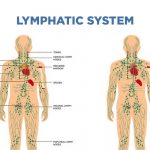Osteoporosis Diet Plan: Bone-Healthy Foods to Include in Your Diet
Osteoporosis is a condition of the skeleton characterized by weakened bones and an increased risk of fracture. The likelihood of getting this and other bone problems increases with age, but there are measures you may take to either halt their progression or make a significant dent in their severity.
Many studies have indicated that people’s bone mass peaks around the age of 35, and that after that, it gradually decreases each year. The good news is that you may decrease your risk of developing osteoporosis by taking preventive measures including eating an osteoporosis diet plan rich in calcium and vitamin D, engaging in regular physical activity, not smoking, and cutting back on alcohol use.
What is a good meal for someone with osteoporosis?
-
Milk, Yogurt, and Cheese
-
Oranges and Orange Juice
-
Leafy Greens
Do you remember “Got Milk?” commercials? They were on to something, it turns out. Calcium, one of the most important elements for bone formation and preservation, is abundant in dairy products such as milk, cheese, and yogurt. When shopping for dairy, look for items with few additives, such as sugar. This will go well in your osteoporosis diet plan.
Oranges and orange juice are high in vitamin C and help your body manufacture the nutrients it requires for strong bones. Vitamin C, for example, is required for collagen formation, which is a protein that maintains healthy bones and joints. Choose calcium-fortified orange juice for a double whammy, so they can help you in your osteoporosis diet plan.
Spinach, collards, kale, arugula, beet greens, and swiss chard are all options. All of these leafy greens and others can help your skeleton by providing high levels of vitamins C, E, K, and different B vitamins, as well as minerals like calcium, manganese, magnesium, and selenium. A salad a day doesn’t seem so horrible now, does it?
What foods to avoid if you have osteoporosis?
-
Sugary Snacks
-
Soda
-
Alcohol
-
Red Meat
It’s critical to remind yourself not to overindulge in sugar, especially if you have a sweet taste. “There is no documented correlation between sugar and its bad effect on bones,” says Heidi Skolnik, CDN, senior nutritionist at The Women’s Sports Medicine Center at the Hospital for Special Surgery in New York and a trustee of the National Osteoporosis Foundation. Satisfy your sweet craving with prunes, cranberries, and other fruits high in antioxidants, which are beneficial nutrients that promote bone health.
Soda consumption might have a harmful impact on bone health. “Drinking seven or more colas per week is connected with a decrease in bone mineral density and an increase in fracture risk,” adds Cosman. “The mechanism is not completely understood,” she explains, adding that “no soda is beneficial for general health.”
Despite not knowing why, a study of 73,000 postmenopausal women who drank soda discovered they had a higher risk of hip fracture, whether the soda was regular or diet, cola or non-cola, and caffeinated or caffeine-free. The study, which was published in September 2014 in The American Journal of Clinical Nutrition, also found that the more soda people drank, the higher their risk became.
Need more reason to drink responsibly? It is well established that chronic and heavy alcohol intake contributes to poor bone mass, impaired bone production, an increased risk of fractures, and delayed fracture healing.
And it can happen far sooner than you expect. According to a study published in BMJ Open in October 2015, healthy women aged 19 to 30 who drank heavily had poorer bone density scores than those who did not. Choose a healthy osteoporosis diet plan to overcome this.
Eating too much animal protein can also leach calcium from your bones, so if you have osteopenia or osteoporosis, limit red meat to two times a week and keep amounts small — 4 to 6 ounces.
A January 2017 study published in Advances in Nutrition discovered that limiting red and processed meats, as well as soft drinks, fried foods, sweets and desserts, and refined grains, all had a good influence on bone health. You can surely pack this in your osteoporosis diet plan.
What is the fastest way to increase bone density?
-
Eat Vegetables
-
Eat High-Calcium Foods
-
Avoid Low-Calorie Diets
-
Vibration Plate Therapy
Bone-healthy vegetables. They include vitamin C, which boosts bone-forming cells. Vitamin C’s antioxidant properties may also protect bone cells. Vegetables also promote bone mineral density. Calcium and other minerals in bones determine bone density. Low bone density characterizes osteopenia and osteoporosis.
Green and yellow veggies boost bone mineralization in children and young adults. Vegetables also help older ladies. Women over 50 who ate onions frequently had a 20% decreased risk of osteoporosis than those who rarely did. Increased bone turnover in older persons increases the risk of osteoporosis.
Bone health depends on calcium, the major component in bones. To maintain bone structure and strength, ingest calcium everyday. Most adults need 1,000 mg of calcium daily, but teens need 1,300 mg and older women 1,200 mg. Calcium absorption varies.
Interestingly, your body absorbs less calcium from meals with more than 500 mg than from those with less. Therefore, include one of these high-calcium foods at each meal to distribute your calcium consumption throughout the day. Calcium is best from an osteoporosis diet plan, not pills.
Too drastic a reduction in caloric intake is dangerous. It can be hazardous to bone health in addition to decreasing metabolism, inducing rebound hunger, and leading to loss of muscle mass. Bone density can be negatively affected by consuming fewer than 1,000 calories per day, according to studies conducted on people of varying body types.
Obese women who consumed 925 calories per day for four months lost considerable bone density in the hip and upper thigh area, regardless of whether they engaged in resistance training.
A healthy, well-balanced osteoporosis diet plan of at least 1,200 calories per day is recommended for building and maintaining bone mass. Protein-rich meals and those high in bone-healthy vitamins and minerals should make up a large part of your diet.
Bone health is promoted by weight-bearing exercise, sufficient vitamin D, and a healthy, varied diet. There are several potential advantages to vibration plate osteoporosis, one of which is the prevention of bone loss that is essential in the fight against osteoporosis.
Those with osteoporosis may benefit from using vibration therapy as a supplementary treatment method, particularly for the purposes of improving their sense of equilibrium, building muscle, and avoiding injury from falls. There is yet no solid evidence that vibration therapy can boost bone density in the long run.
Ask your medical staff about vibration plate osteoporosis if you’re interested. They can aid you in determining whether or not vibration therapy would be beneficial to your specific health situation.
What food worsens osteoporosis?
Processed Meat
As with other types of food, processed meat may interfere with the body’s ability to absorb calcium. High-processed meat diets have been related to an increased risk for cancer, cardiovascular disease, and diabetes, among other health issues.
In order to reduce your risk of osteoporosis and other diseases, specialists advise eating processed meat no more than twice or three times each week, and replacing it with leaner proteins like chicken, fish, or plant foods whenever possible.
Wheat Bran
Another food that has been shown to impede calcium absorption is wheat bran. Wheat bran has a lot of beneficial nutrients, but its high phytate content can counteract the benefits of calcium if you eat both at the same time.
Wheat bran has other health benefits, but consuming it at the same time as high-calcium foods like dairy, sardines, some legumes, nuts, seeds, and leafy greens may cause calcium absorption problems.
High-Sodium Food
Excessive ingestion of salt, or sodium chloride, has been linked to increased calcium excretion, similar to the effects of coffee. If you consume an excessive amount of salt, your kidneys will be unable to get rid of the extra chloride in your system fast enough, and they will start drawing base stores from your bone to keep the system in balance.
This will cause your body to absorb less calcium. If you don’t add a lot of salt to your meals, you might believe you’re safe, but many of the foods we eat on the move, including some of our favorites, can have shockingly high levels of sodium.
Sources:
https://www.bonehealthandosteoporosis.org/patients/treatment/nutrition/
https://www.valeriusmedical.com/blog/bone-strengthening-foods-to-help-combat-osteoporosis
https://www.everydayhealth.com/osteoporosis-pictures/bad-for-your-bones-foods.aspx
https://www.healthline.com/nutrition/build-healthy-bones#TOC_TITLE_HDR_7







